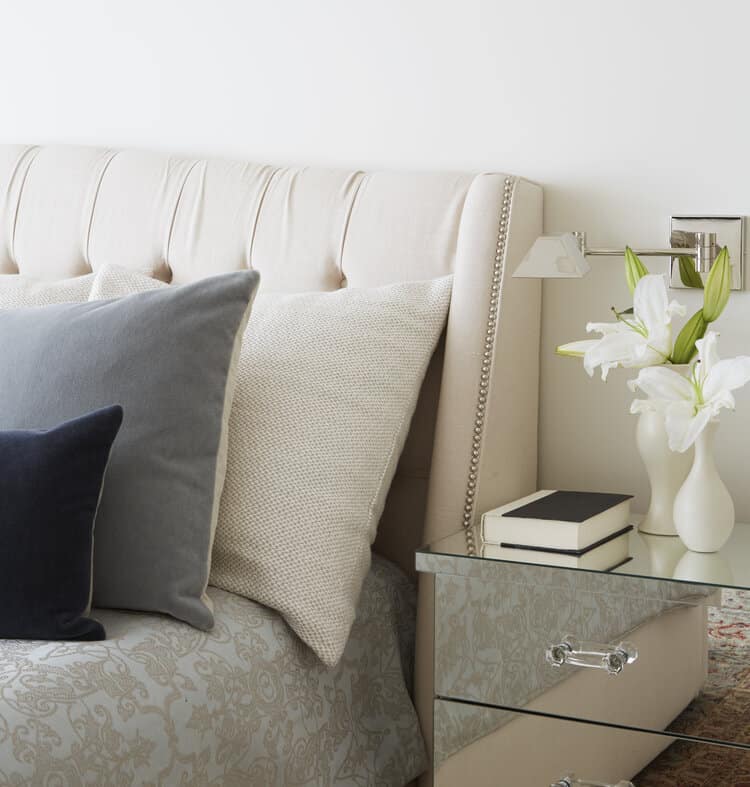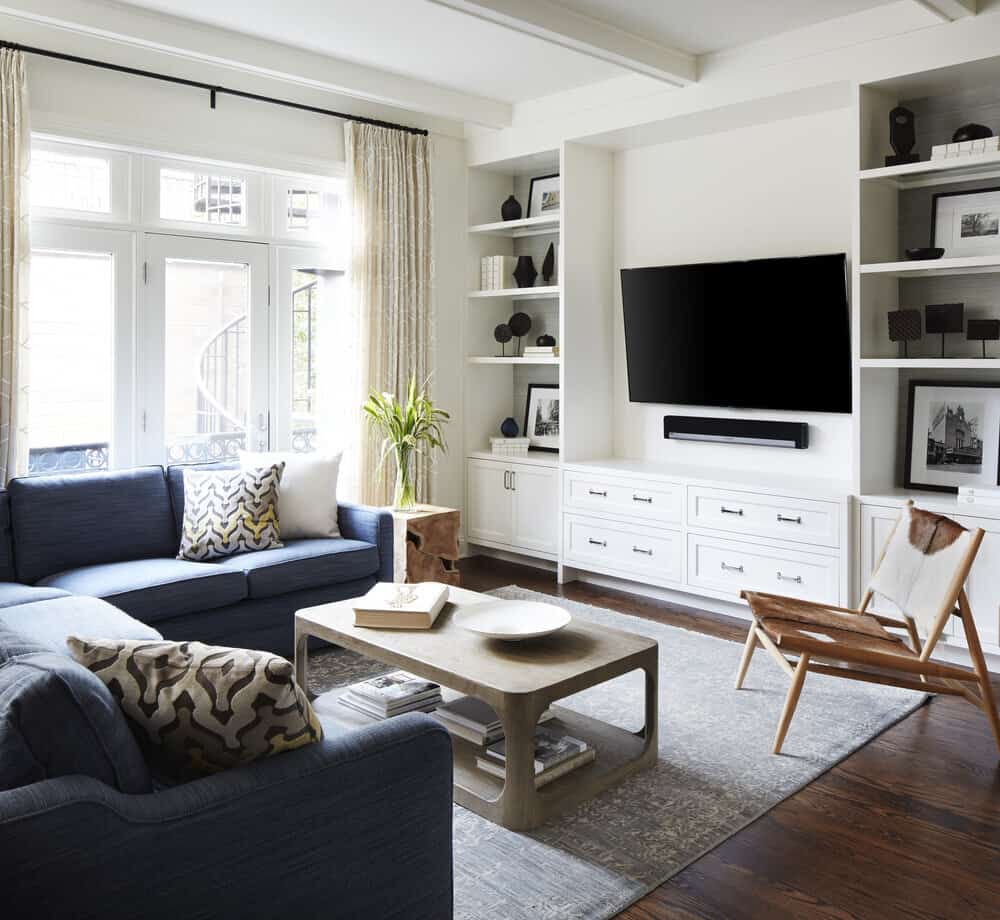Design’s incredible power to change lives keeps me passionate about what I do, day in and day out. Next time you feel either completely at ease or high stress, take a look around you and consider how your space is impacting your mood. Your environment can make such a significant impact on your mental state, and how you choose to design the space around you affects you more than you may even realize.
As many of you already know, mental health is incredibly important to me, and to know that my work can make a difference in the way someone feels after a long, stressful day when they enter their home makes all the difference. Bridging my two passions, I am always incredibly focused on not only what will look best, but also what feelings might flow from our design selections.
As we’re entering a fresh year and looking to make positive lifestyle changes, I am excited to share a few ways design can impact your mental health, outlining how these key changes can uplift both your home and your mood.
Tap into the psychology of color.
Understanding the impact color can have on your mood and strategically incorporating various hues into your design plan can play a vital role. Here at AKD, we carefully consider the psychological effects of every color, after including lighter blues and greys in bedrooms and bathrooms to enhance a feeling of calm, while keeping stimulating and fiery reds and oranges in playrooms, offices or areas of more social activity.
Color is a powerful design tool that can completely transform how you feel in your home, adding touches of serenity or energy.
Dark or light hues can also make an impact. For example, if you want a room to feel more spacious and open while exuding a sense of peace, you might lean towards a calming pastel. However, if you want to create a peaceful, yet intimate space, you might lean towards a darker, muted blue, that still gives off a sense of serenity with an added layer of coziness and intimacy.
Understanding the psychological effects color has within design can completely transform your space and how you feel within it.
Utilize the power of light.
Lighting is another incredibly powerful design tool and both natural and artificial lighting should always be a key consideration. As with color, your lighting design will vary room by room, depending on the type of mood you are hoping to achieve.
As a general rule of thumb, for rooms where you are gathering, cooking, entertaining and eating, take a brighter approach. For rooms where you are winding down and relaxing, consider quiet illumination.
And always remember, whether you want to go bright or subtle, achieve your lighting output by layering various sources for a richer look and feel. In this post, I offer numerous tips on how to layer various sources of light to creatively enhance the lighting design and ambiance of the room.
Organize and declutter.
Studies show time and time again that mess equals stress. Clutter negatively affects our minds as it naturally distracts our attention, calling for a redirection of our focus and taking up valuable brainpower.
First things first, tidying up the piles that have accumulated around the home will make a world of difference.
But don’t stop there. Once a year I love to audit my closets, get rid of what is no longer necessary, and reorganize. Even if it is out of sight, knowing everything is where it belongs will give you peace of mind.
Then, go one step further and take a look at your decor, throw pillows, blankets, candles, and other small, simple items around the home and pare down to what you really love and use. Simplicity is key.
By decluttering and streamlining your design, you will rid yourself of excess stress, improving your mental state and allowing yourself to take a deep, calming breath.
Revitalize your space and rearrange with what you have.
Undoubtedly, there is a significant connection between a positive mental state and visual surroundings that reinforce serenity, passion, and peace. Take a look around your home and challenge yourself to take part in a fresh, uplifting redesign by simply using what you have. Play around with pillows, bookcases, artwork and even furniture and discover new ways to breathe life into what you own to add a sense of excitement and newness to your space.
-
Decor: Don’t be afraid to swap out pillows from a bedroom for the pillows in the living room and see how different color combinations make you feel. Same goes for various decor pieces. Unique new pairings can completely change the look and feel of your item.
-
Bookshelves: Declutter and add visual interest by arranging your books by color. Take off the dust jackets and try out color blocking with your book collection — and don’t forget to play around with horizontal and vertical arrangements for added depth and interest. You can read more of my tips for designing bookshelves here.
-
Artwork: Rearranging art in a home is a great way to transform a space, as well, and bring about a whole new perspective and mood. If you find your eyes constantly being drawn to that dreaded empty wall, consider what you already have in another room that could find a new home and create a new ambiance. You could also use empty spaces to incorporate a gallery, mixing various sizes and motifs. Remember that art is anything you have a personal connection to; don’t limit your creativity. Consider sentimental pieces from your kids, beautiful drawings or photography from your travels, or even pieces that have been handed down through the generations, like a cherished scarf that could be framed.
-
Furniture: Changing the layout and flow of your space by moving furniture around can also give you a new perspective, and perhaps a new focal point in a room. Decide how you want a room to function and do not be locked into the original purpose of a room. This past year has challenged us to use our home in new ways. Consider what you love to do in your home and make that a priority as you evaluate the purpose of each room.





